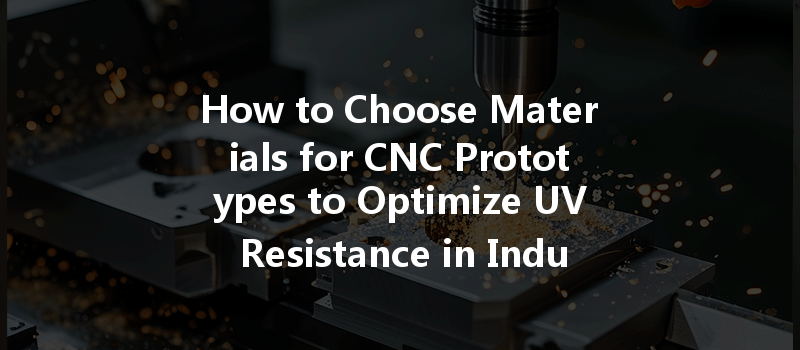Opening
Did you know that approximately 80% of all plastics used in manufacturing processes can degrade when exposed to ultraviolet (UV) light? This fact highlights a crucial aspect of material selection in CNC machining, especially for prototypes intended for outdoor use or exposure to UV sources. For engineers and product designers, optimizing UV resistance is not just a preference; it’s a necessity that can significantly impact product lifespan, performance, and sustainability. In this comprehensive blog, we will explore how to choose materials for CNC prototypes that can withstand UV exposure and the strategies to maximize UV resistance.
Understanding UV Resistance
Before we delve into material selection, it’s fundamental to comprehend what UV resistance means. Often in industrial applications, UV radiation leads to photodegradation, a process where materials, particularly certain plastics, lose their physical properties due to prolonged exposure. Common signs of UV damage include discoloration, brittleness, and loss of strength.
Understanding how different materials react to UV light helps in selecting the right one for your projects. Generally, materials can be categorized based on their reaction to UV exposure:
Choosing the right material will be crucial for ensuring the longevity and durability of your prototypes and products.
Factors Influencing Material Selection
Several key factors come into play when selecting materials for CNC prototypes aimed at UV resistance:

Analyzing these conditions can guide you in selecting a material that can effectively withstand the anticipated wear.
Best Practices for Material Selection
Now that we understand the factors influencing material choice, let’s explore best practices for optimizing your selection process:
Before starting, identify the functional and aesthetic requirements for the prototype. Ask yourself:
Having a clear set of requirements will streamline the material selection process.
Material data sheets (MDS) provide crucial information regarding the UV resistance characteristics of various materials. Review tensile strength, elongation, thermal stability, and specifically any UV resistance ratings provided.
Prototyping provides an opportunity to visualize how materials respond in real-world conditions. If possible, conduct accelerated UV testing on it to gather empirical evidence of performance over time.
Consulting suppliers can provide insights and innovative solutions for enhancing UV resistance. Suppliers often have proprietary products or technologies focused on increasing UV protection in their materials.
Choosing the right materials for CNC prototypes to optimize UV resistance is an intricate process that demands careful consideration of material properties, environmental factors, and project specifications. By understanding how different materials react to UV light, utilizing advanced additives, applying coatings, and following best practices, engineers and designers can create durable products that meet demanding operational requirements.
The importance of this topic cannot be overstated, especially in today’s market where sustainability and product longevity are paramount. By investing time and resources into effective material selection, you position your prototypes for success in competitive industries, ensuring that they perform flawlessly under the vicissitudes of their intended environments.
Remember, the materials you choose can mean the difference between a product optimized for success and one that faces early degradation. Therefore, it’s worth considering various solutions to create more robust designs through effective material selection.
Exploring innovations and advancements in CNC machining materials will help you stay ahead in industry applications where UV resistance is critical. If you have any questions or need guidance on selecting the right material for your next CNC project, don’t hesitate to reach out to experts in the field. After all, a well-informed decision can make all the difference!






